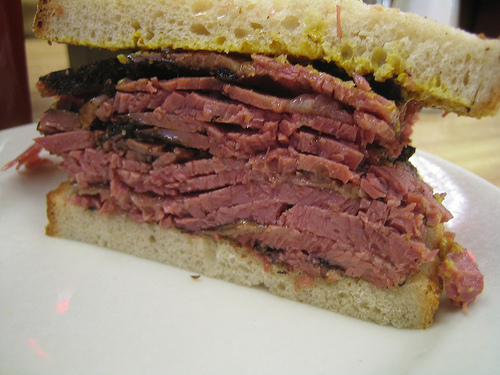Hacking Display Advertising
- Edit
- Delete
- Tags
- Autopost
Vanilla Sky
In Q2 2007 while most of the industry was living some sort of vanilla sky of Behavioral Targeting one company came in and paid, what at the time seemed to most people way too much money, to own a controlling interest in display. No, I’m not referring to AOL buying TACODA. The company I’m talking about has maintained a focus since day one on hacking what you are interested in at that very moment. Unlike other content aggregators it tied its advertising system in the core user experience of its pages and the realtime relevance they delivered. Their stated Display strategy has little to do with cookie matching and everything to do with realtime context and creative optimization with the purpose of “capturing relevant moments.” It is now the most powerful company in Display. That company is of course Google.
Lucid Dreaming
The first lesson here is about the medium itself. This is a different medium and the old media buying and selling template breaks here. Behavioral Targeting may have changed names to the less scary “Audience Buying” but seven years later performance expectations have not been met and it has dragged display into the mud of issues like privacy, ad verification, cookie stuffing and more.
By contrast, Search and email – the most important of the web’s applications - have little use for tracking people across the web, let alone reach and frequency measures. They are the opposite of that. Search (and the web itself) was built by hackers to solve information management and retrieval problems.
The second lesson is that in this medium three pieces of data are valuable – context, timing and performance. The rest is just pipes. Understanding the context of an impression or click at the moment the page is loading and the ability to optimize the message is what the web was built for. It took Search to turn it into a marketing channel but growth (~20% YoY with no end in sight) and the size ($46B in 2013 per eMarketer estimates) of that channel shows how powerful that data is and how helpful understanding it can be to consumers.
Waking Up
The fact that it is referred to as display “advertising” is reason enough to know it’s from another time. This medium kills advertising. Everything on the web is marketing. As Suzie Reider, national director of display sales for Google said recently “display needs to move beyond advertising and into interacting.” Yesterday, Krux CEO Tom Chavez wrote a thoughtful blog post on how it is time for display to move beyond advertising. We agree and we're walking the walk.
This doesn’t mean that publisher will not show ‘graphical’ units as Google calls them. Of course they will. It doesn’t mean that prime real estate isn’t going to be turned over to these units, they will. We’re headed to a world with fewer messages that will be bigger and more interactive. But if we have learned anything from Search it is that format and size don’t matter when the message is relevant, helpful and useful at that moment.
Billions of Relevant Moments
As long as technology to understand context and timing are progressing as fast as they are (and as places like Betaworks where realtime is the thesis of the new medium value creation the startups are hacking away) there is a bright future. Search has proven that the web is the greatest and most democratic marketing medium ever created. The hackers working with dynamic web languages and event driven programming can unlock an order of magnitude of more relevant moments. There are literally billions of them out there waiting to be captured and created. At Yieldbot we see this scale everyday in the inventory of web publishers and if you’re a hacker and remaking the staid idea of advertising appeals to you we would be interested in speaking with you.



